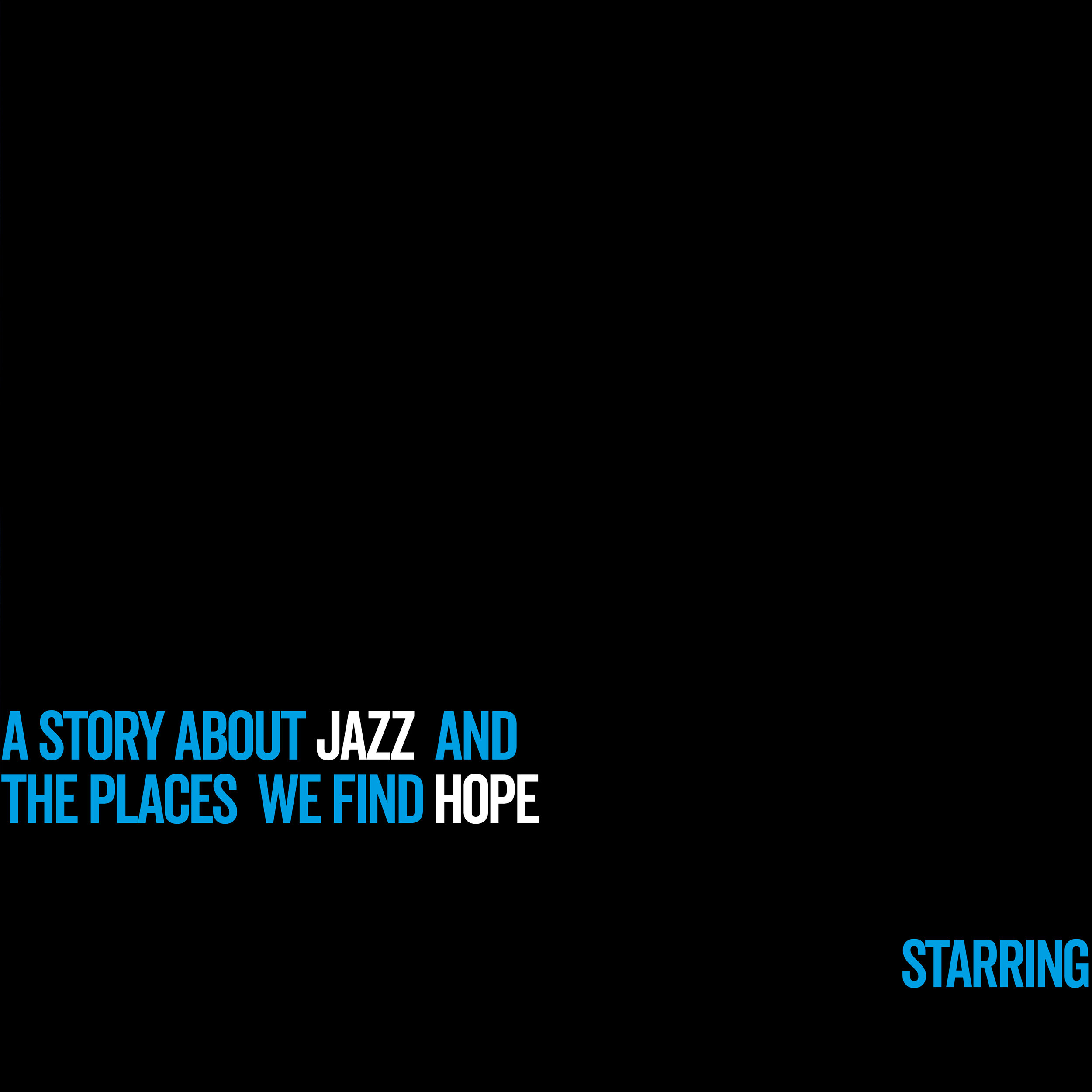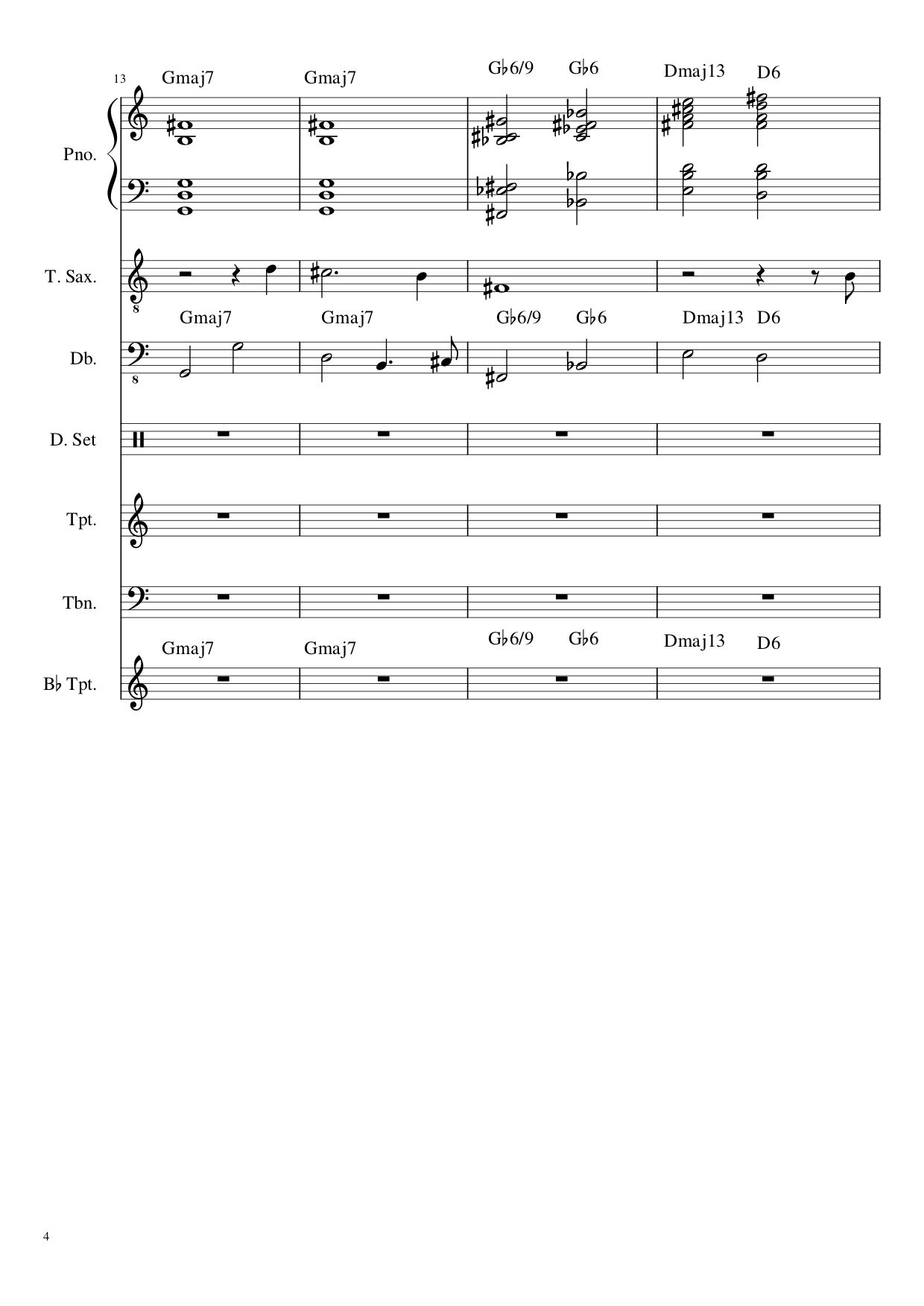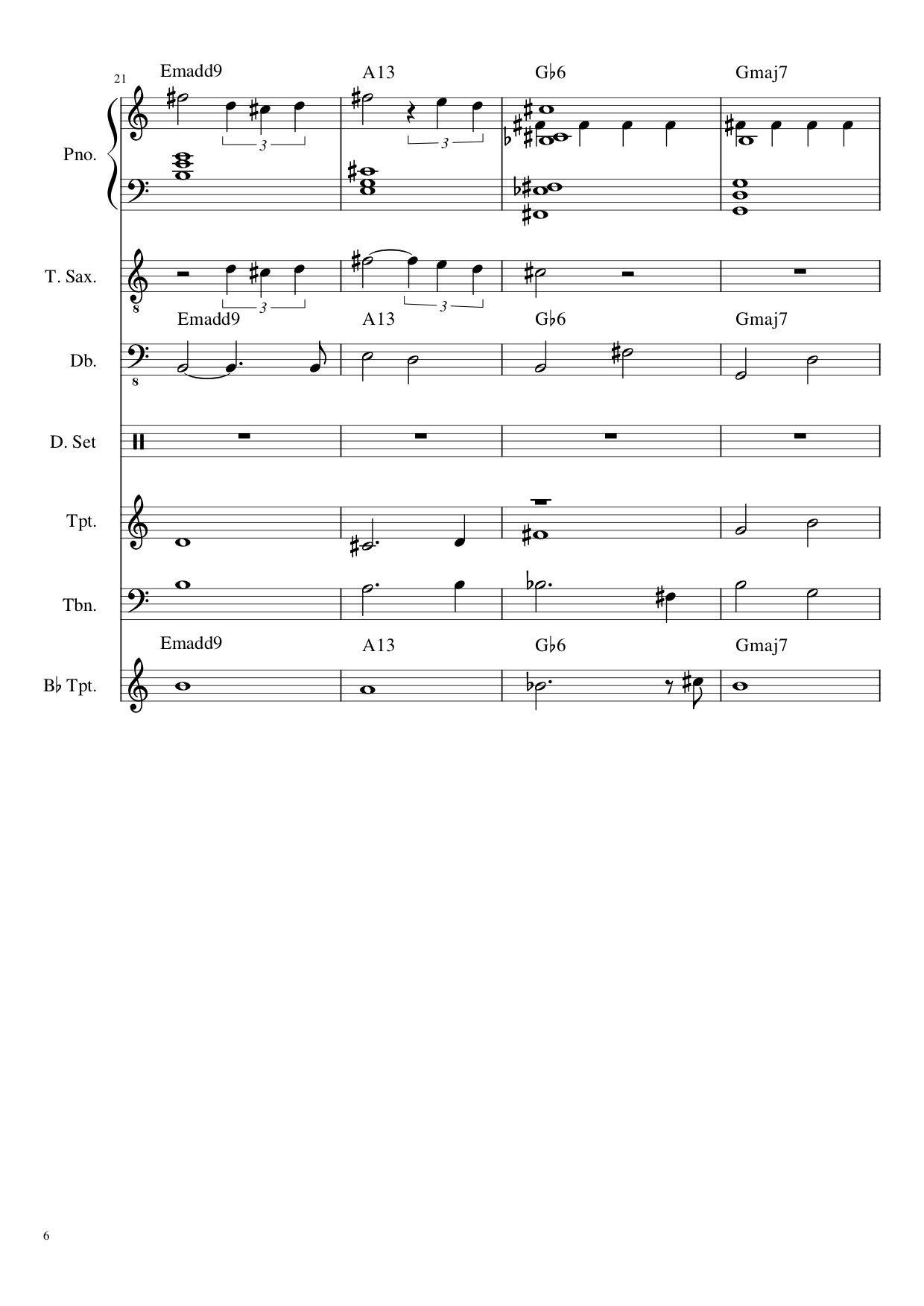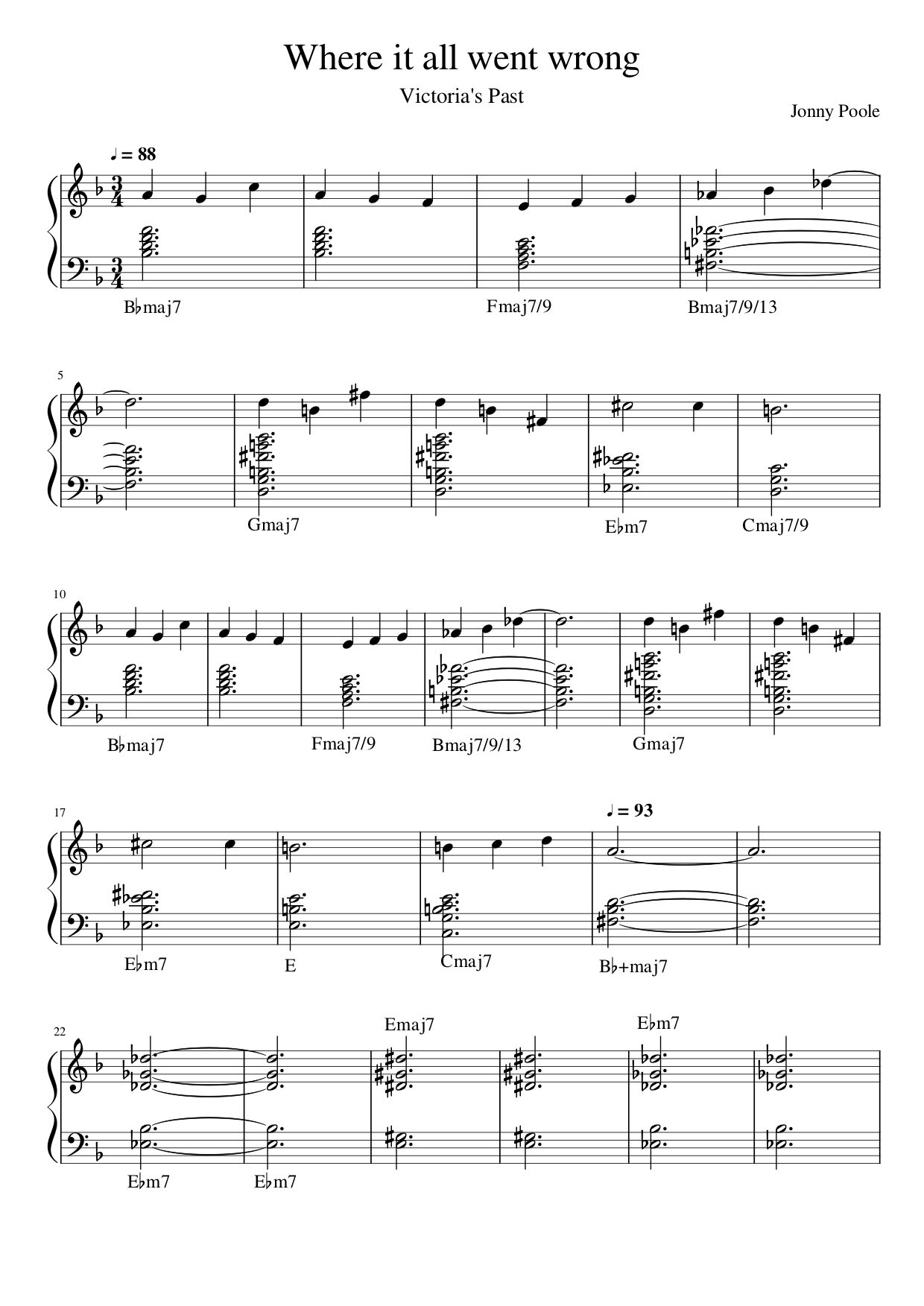Steal Suffering
Film Score Composed By Jonny Poole
The story behind the film
In the summer of 2017, James Hattam wrote a play focusing on how people live when they experience pain and hardship. The play was written and released at a table reading, held in February 2019. The table reading was a great success, as was the release of a promotional video, ‘A speech for Soho’.
Seeing the potential for film to be distributed and shared, James decided to rewrite the Steal Suffering story as a screenplay.
The screenplay follows three (out of the original 5) characters in their own pursuits of hope. The story itself is inspired by the structure and content of jazz music, drawing upon its relationship to both tragedy and hope.
The Score
The film centres heavily around Jazz music with the majority of the movie being set in a London Jazz Bar. When the Director James reached out to me my attention immediately turned to the films slogan “A Story About Jazz and the Places we Find Hope”. I got to reading the script right away. I loved the message of the film and the way it focused on the lives of 4 main characters: Massimo, Elliot, Victoria and Serge. Focusing on there individual stories that in one way or another all centred around this Jazz Bar.
James had a wealth of knowledge on Jazz music and sent me some playlists of music that inspired him and the individual characters within the film. I went away and soaked up the music to put my self in his shoes and figure out what we wanted musically from the film as a whole… One thing was clear it would be centred around Jazz.
It was important to get a consistent sound throughout the film although the characters had very different stories to tell I still wanted to keep a concise and focused sound palette. There were scenes throughout the movie which had Diegetic sound meaning the music was coming from on screen sources for example a jukebox or radio. However, in this case it was the house band of the bar. With this in mind I decided to have three main sound worlds to the film 1.) The Jazz Ensemble made up of Drums, Double Bass, Piano, Trumpet and or Sax. 2.) String section with ethereal piano and atmospheres to create the soundscape underscore elements. 3.) Would be a crossover of the two sound worlds together. I had to be aware of the budget. There wasn’t enough to have real players in for all of it, so I had to think wisely about the key elements/ instruments that would impact the score the most. The musicians/ instruments I chose were as followed:
Band List
Me (Jonny Poole) - Tenor and Alto Sax
Will Hobson - Piano
Daniel Gray - Trumpet
Robin G. Breeze - Double Bass
I used a bunch of East West String sample libraries for the string section. I have a lot of experience using these to create realistic representations of the real thing, so I was confident with a mix of real musicians I could make this work (although the real thing is always desired).
Steal Suffering Theme
I began by working on the Main Title Theme for the film which would underpin a montage section at the beginning in which Serge has a Monologue overviewing the premise of the story. The note from the Director was “Needs to be striking but not overwhelming. Walking the line between melancholy and hope. Hearing melodies that remind of us of the themes that Serge is speaking about in the monologue – essentially love and loss”.
Primarily using the Jazz band as the anchor to the piece with strings to bolster up the arrangement and add a cinematic flare to the track.
The theme hits immediately played on the tenor sax. Accompanied by luscious piano accompaniment gradually building to a point in which the drums and Bass enter, holding down the rhythm and introducing the Jazz Band to set up the tone for the film.
The piece takes some inspiration from composers such as Bill Evans and Miles Davies along with score from the likes of Bernard Herrmann’s Taxi Driver and Nicholas Britell If Beale Street Could talk.
It conveys a certain bitter sweet melancholic to emphasis the over whelming factors of the tragic yet hopeful story telling.
Play the track above and follow along with the score below…
As you can see the score is fairly bare boned but having solid demo tracks and parts in place gave the musicians a clear idea/ reference to what I was looking for in terms of the sound, dynamics and performance. Remember this is a jazz score open to some interpretation. You’ll see in particular the piano part is scored with mostly chord symbols with notated chord voicing’s as solid guidelines but the pianist had the freedom to approach the performance in a more free and interpretive way. Using the space to inject a sense of life and colour with counter melodies and extra chord extensions. The demo piano part I had pieced together was pretty solid in itself but it needed the natural performance of a professional pianist.
Having played the drums in myself I ended up leaving it blank being happy with the performance thus not needing to hire a drummer.
The trumpeter played both the flugelhorn and muted trumpet parts. The flugel adds a certain warmth that blends well with the trombone. where as the trumpet contrasts nicely with these elements cutting through the mix with a counter melody to the lead tenor sax line.






Chet’s Records
Chet’s Records is a rendition/ cover of Chet Bakers piece “I’ve Never Been in Love Before”. This is the first scene you hear and see the house band playing on stage… There were some tricky problems to overcome with this scene as I had to extract and use the vocal take from the room but replace the band in which the drums and bass were caught through the mics (fortunately the keyboard player was miming/ muted). With the help of some handy plug-ins the vocal was extracted and I could then get on with the instrumental. If and when the drummer was on screen I would make sure to match up with there performance and also with the bass and piano to a lesser extent as long as it didn’t fundamentally effect the flow and sound of the music I was writing. As Elliot begins to speak through the camera to us the audience I almost wanted the sound of the band to drift off as a wash into the background, taking us out of the Jazz Bar and into Elliots mind or internal monologue.
I time a few trumpet licks to correspond with the dialogue for some added effect. Blending the reality of the band behind him with a more interpretive imagined element as if Elliot was playing it or hearing it in his head.
The piece then turns to something a little more uncertain and washy a reflection of Elliots story about his father. This then leads well into the next scene in which Elliot continues his monologue and reveals more intimate truths about his ideology and personal life. The music crosses over to the Second sound palette as mentioned earlier (2. String section with ethereal piano and atmospheres to create the soundscape underscore elements). The piece is fairly sparse leaving space for the dialogue to breathe. This sound represents Elliots character throughout the film with subtle drones and piano motifs.
Skip to 7:47 minutes in to watch the scene taken from the film
victoria’s theme
I really enjoyed writing for Victoria’s character there was a lot of emotion that music could emphasis within her character.
She’s homeless living on the street but that hadn’t always been the case as the scene below will reveal.
She represents both beauty and deep sadness. Someone who lost there way.
We are introduced to Victoria’s character when Serge sits with her on the street outside the bar. The scene is shortly followed by her monologue at which point I introduce Victoria’s Theme.
I used a similar approach to that of Elliots Monologue. I started with the fundamentals of a jazz trio beginning with the piano forming Victorias motif shortly introduced by bass and drums on repeat of the motif. I then flipped the motif on it’s head with more sustained notes breathing space into the track, with the introduction of the atmospheric dream like piano sound. I took the double bass part and chopped it, reversed it and lathered it in a wash of reverb to create a pulsating wavering type effect which is almost unrecognisable from the double bass previously heard before. This creates a foundation of uncertainty to the piano motif on top. Another way I create atmosphere to the sound is by using my sax in an unconventional way. I recorded me breathing down it, one panned to the left and then another to the right, then layered reverse and delay to create this swirling space which underpins the majority of the rest of the track.
Around 2:00mins in the theme has now drifted off and we are left hanging on this rich reverberation soundscape, combined with an organ and sub bass drones along side some deep percussive textures that merge through the thick fog of the track. The ever more erratic sax lines represent Victorias downward spiral as she loses control and sight of herself… However the introduction of the repetitive soft string chords from FMaj7 to CMaj7 represent sorrow and the acknowledgement of her mistakes. This is a simple reoccurring chord progression that grounds the film and it’s characters together.
Piano Score below…
Skip to 22:40 in to watch the scene from the film
Loud Noises
Massimo’s Monologue
Loud Noises follows the story/ Monologue of Massimo played by Kevin Dixon. A Businessman on the verge of unhinging as we watch his personal story unfolding on screen. Loud Noises was the most challenging of all the pieces to write. It came with a number of obstacles, the main one being that I had to write music that would sync up with the band in shot. But I didn’t want to jeopardise the music too much, so I needed to find a balance between sounding great and looking convincing.
Massimo’s Monologue starts and Ends in the Jazz Bar. The band elements of the piece are predominantly centred around the drummers frantic solo. The sounds and erratic nature emphasis Massimo’s story and begin to define his character.
I took inspiration from scores such as Antonio Sanchez Birdman and Justin Hurwitz Whiplash.
I wanted to get a real drummer to play the drum solo in for more authenticity to help create the most natural sounding feel. But as I delved into writing it out I quickly realised this just wasn’t going to be a practical option. The drummer on screens solo was so fast and so sporadic like a typical bebop jazz solo it would have been very fiddly to replicate by a live performance so I instead inputed it myself using a sample drum kit trying my best to always keep the illusion that this was in fact a live and improvised performance.
Skip to 12:03 to watch the drum solo. See if now knowing it’s not live does it look and sound convincing or not?
If and when the camera wasn’t on the performers I could be freer with my approach and had personal license to adlib the drum solo being careful to keep with the flow of the solo matching up nicely whenever the drummer was back on screen. I did try add a rough click track but seeing as it was a live performance it did not stick completely to the grid and frequently fluctuated.
Moving onto the middle section of the piece 1:57 we leave the bar and get transported to Massimo reflecting/ reminiscing on the day. Focusing on the things that make him tick and the anger boiling up inside him. All building up to him inevitably having a panic attack.
My main goal was to create a mood that was ever pushing and pulling towards the eventual climax of the scene which in this case was the panic attack. I needed to help emphasis the overwhelming feelings and pressure he was under.
I built up the textures of the soundscape using a mixture of both synthetic sound encompassing deep flowing drones and weird rippling textures. Drum fills continue to enter emphasising the quick scene transitions and acting as fragments still creeping their way in from the drum solo in the bar. I also recorded a metal scraper dragging along a hard surface to make some harsher more metallic sounds to rise into scene changes as we entered the hustle and bustle of Londons busy industrial business environment. Repetitive sax stabs drift in and out of frame, adding to the cacophony of sound. Not to get in the way of the dialogue I kept melodic information to a minimum with more atonal elements purposefully keeping it more in the realms of underscore, I bring in some strings that help with the emotive elements of the scene capturing his pain along with this the drum solo from the bar begins to creep back in I wanted to make the scene more indistinguishable blending the drums in earlier as we cross from Massimo’s memories back into the bar. I replicate the feelings of the attack as he grips his head and hair, with sharp screeching sounds. I also increased the gain and saturation on a preamp of the deep drones and drums to create a wall of noise. The drum solo then hits in full swing with gunshot like hits to penetrate through the mix. Massimo starts to calm and we hear him breathing deeply I mimic this by fading out all elements of the score until we are just left with the drummer in the room as he finishes his solo.
Home/Hope
I’ll finish this blog post on the final piece in the film which rounds off the story and message of the film “A story about Jazz and the places we find hope”
The bond between a mother and her daughter
Home/ Hope takes us away from the sound of the rest of the film and uses a far more traditionally cinematic approach to scoring. The Director wanted a crescendo of emotions to round off the beautiful touching final scenes of the film in which Victoria is finally reunited with her mother.
I wanted to match and capture that sense of belonging and hope that when all may seem lost there is always light. The film captures this beautifully through the bond between a mother and her daughter.
I was closely inspired by some of the ways Jazz pianist Bill Evans plays. How he spaces his chords and the soft emotive way he puts passion and thought into every single note. I wanted every note to have a purpose to truly follow the characters progression and help the audience identify with their struggles but also strengths. I never scored this piece as I recorded it myself and kept it quite open and flowing. I wanted a natural organic sound to avoid anything jagged and robotic. I started the piece simply with solo piano with a strong and elegant melody to set the scene. This slips away and is introduced later again but this time with an orchestral accompaniment. I always find it amazing what simply changing the arrangement and instrumentation can. The melody goes from feeling quite isolated and melancholic to being transported somewhere more majestic and powerful. Almost as if the melody was feeling more sure of itself.
The B section from 0:40 - 1:50 brings more urgency to the scene with the piano accompaniment providing a clearer pulse and the introduction of the strings and trumpet. Trumpet has been quite a defining feature of the score so adding the muted jazz trumpet helped bring the overall sound closer to the score as a whole.
The C section 1:50 - 2:35 It begins by hanging in suspension over a droning A. I layered in the same reversed and processed Double bass sounds from Victoria’s theme in here to add more unsettling tensions to the atmospheric strings. The piano is then introduced but this time with more uncertainty. The chords create more tension as if pushing and pulling away from the anchor point, but finally it resolves and leads into the climax of the piece as it returns to the A section in full force.
Skip to 30:18 to watch the whole final passage from the film
The Seas between us
Film Score Composed by Jonny Poole
Rustlers Burgers German Arthouse film about the Hamburger and his estranged son
Article Cutting
A German arthouse film released by Rustlers about The Hamburger and his estranged son.
The making of the Soundtrack
By Jonny Poole
Adelphoi Music Publishers came to me looking for a Jazz oriented score for a feature length film. What I didn’t know was that it was going to be an avant-garde German Arthouse film.
We sat down for coffee, discussed the film and its premise and talked about the style of music they were after. I left the meeting now realising I had signed up to write an all encompassing, Avant-Garde Free Jazz score! I never thought I’d be doing that, especially not on my debut feature length movie!
After some research, script reading and viewing the movie several times, I had a good idea of the root I was going to take in approaching the music.
I wanted to create something raw and gripping; something that sounded live and organic. I felt these elements would make up the fabric of the score and would flow with the uneasy tension of the film.
It wasn’t just writing a score in the traditional sense, this would need clever planning and a great group of musicians to perform it.
For my vision to work, I had to achieve a balance of fully scored parts and more improvised elements. I wanted it to be recorded live with all the musicians together, feeding off each other. If I were to record it all, one by one, I would lose the essence of the free flowing, organic jazz; leaving it sounding contrived and unnatural. So, I had to add precise time stamps on the players parts and have a projector with the movie rolling, to catch the visual cues. With all this in place it would, in theory, lead to a well balanced score that fully encompassed the arc of the film, flowing seamlessly from scene to scene.
It all came down to a lot of prep work, one rehearsal with the musicians and finally a day in the studio; all under a tight 2 week schedule.
Band List
Me (Jonny Poole) - Tenor and Alto Sax
Will Hobson - Piano
Cameron Morrell - Drums
Robin G. Breeze - Double Bass
Malachi Siner-Cheverst - Cello
SCROLL DOWN TO THE BOTTOM OF THE PAGE FOR THE FULL SOUNDTRACK
Here are some examples of the scores. Follow along with the tracks.
***Recommend that you look on a laptop rather than mobile device as when you click the audio player it will inconveniently direct you to another tab, apologies for this, trying to sort it with Squarespace as we speak.
Speaks of the past
First Page only
Schneller Schwung/ The Kitchen Ballad
1 Schneller Schwung time stamp 44:54 2 Kitchen Ballad from time stamp 46:30
Pg 1
Pg 2 only
First memory
Someone’s Missing
Example of a very vague score that I left open to interpretation. The key was for me and Cameron (drummer) to lock in with each other whilst simultaneously watching the scene unfold.






















